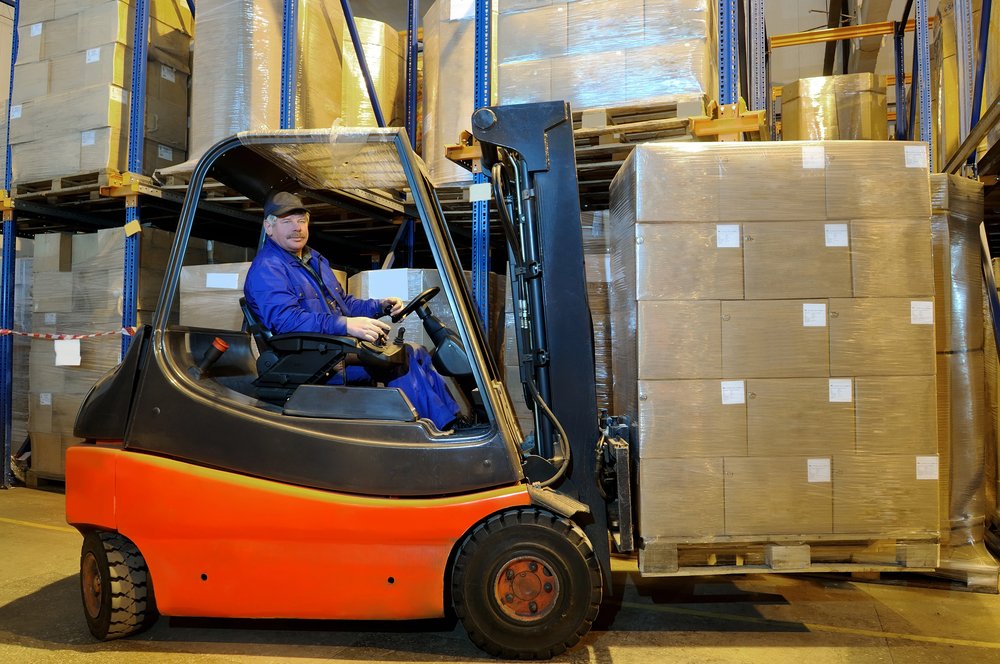Pallets are key to modern logistics. They support goods as they move through the supply chain. Their weight capacity-a critical specification-varies dramatically depending on the material used in construction. This report looks at how different pallet materials affect load-bearing capacity.
Understanding Pallet Load Capacity Terminology
Before we dive into specific materials, let’s look at the types of load capacities for pallets. The load capacity can also depend on the material and whether the pallet is new or used. Due to the strength of pallets, they are often reused and recycled. For example, wooden pallets, which lose about 10% of their strength, are three or more times cheaper than new pallets, according to Repackify.
Static vs. Dynamic vs. Racking Capacity
Static load refers to the weight that a pallet can support when it is stationary or not in motion. This applies to pallets storing stock on a warehouse floor or when they are stacked. Static load capacity is usually greater than dynamic load capacity. This is because the pallet does not face the stress of movement.
Dynamic load is the weight a pallet can hold when it’s moving. This includes when it’s lifted by forklifts or pallet jacks. A dynamic load considers the extra stress on the pallet when lifting, moving, and handling it. A pallet with a dynamic load rating of 2000 lbs can hold 2000 lbs of evenly spread products. You can safely move it with a forklift or put it on a conveyor system.
Racking load is the strength load rating for when a pallet is placed in a racked system. During this test, parallel support beams hold up the pallet. The load capacity given is the Rack Capacity.
Knowing these differences is key when choosing pallets for certain uses. If you exceed these limits, it can cause pallet failure. This may be dangerous and expensive.
Wooden Pallets: The Traditional Standard
Wood pallets are the most popular choice in the United States. Their performance varies depending on their design.
Stringer vs. Block Designs
Wooden pallets come in two primary designs: stringer pallets and block pallets. Stringer pallets have parallel boards, called stringers, between deck boards. They usually support lighter weights than block pallets. Industry data shows that wooden stringer pallets have a rackable load capacity of 2,500 lbs. Their dynamic load capacity ranges from 2,200 to 2,500 lbs. For static load capacity, they also hold 2,500 lbs.
Wood block pallets usually hold a rackable load of 2,800 lbs. They can manage a dynamic load of 4,600 lbs. Their maximum static load capacity is 5,500 lbs. This increased capacity stems from their more distributed support structure.
Size Impact on Capacity
The dimensions of wooden pallets significantly affect their weight capacity:
- 30” x 30” wooden pallets: 1,200 lbs
- 40” x 40” wooden pallets: 2,500 lbs
- 48” x 40” used wood pallets: 2,200 lbs dynamic, 6,000 lbs static, 2,000 lbs racking
- 48” x 48” wooden pallets: Safe maximum load of 4,673 lbs
The standard GMA (Grocery Manufacturers Association) pallet is 48” x 40”. This size is the most popular in the U.S. About 30% of all new wood pallets made are this size. This size is commonly used in grocery, general warehousing, and storage applications.
Factors Affecting Wooden Pallet Capacity
A bunch of stuff affects how much weight your wooden pallet can handle:
- How thick the wood is
- What kind of wood it’s made from
- How they put it together
- The overall design
Good pallets usually have deck boards around 3.5 inches wide and 1/2 inch thick. This helps spread the weight out better.

Plastic Pallets: Lightweight Strength
Plastic pallets offer impressive strength-to-weight ratios and come in various durability classes.
Capacity by Grade
Plastic pallets range widely in their load-bearing capabilities. The NPP-4840-FP-E6OD 48×40 plastic pallet is a best seller. It has a static load capacity of 8,800 lbs. Its dynamic load capacity is 4,400 lbs, and the racking load capacity is 2,200 lbs. The 48×40 plastic pallet also has a higher capacity. It can handle a dynamic load of 4,000 lbs and a static load of 13,200 lbs.
Plastic can withstand moisture and extreme temperatures.
Weight and Efficiency Advantages
Plastic pallets are lighter than wooden ones, which is a big advantage. The NPP-4840-FP-E6OD plastic pallet weighs just 34 lbs. It also provides strong load capacities. This weight loss means fuel savings in transport. It also keeps high load capacities.
Plastic pallets also offer operational benefits like stackability and rackability. The ventilated top deck of plastic pallets allows for good airflow. The open design is helpful for strapping products.
Metal Pallets: Maximum Durability and Capacity
Metal pallets have the highest weight capacity. However, they are also heavier and more expensive.
Aluminum and Steel Variations
Metal pallets work great for tough jobs. They’re super durable and can handle heavy loads. Not a lot of specific data exists, but industry experts agree on the benefits. These bad boys can support over 5,500 pounds – perfect for moving hefty stuff around.
The solid construction means they stack evenly and distribute weight really well.
Trade-offs in Weight and Cost
The substantial weight capacity of metal pallets comes with increased pallet weight. This higher weight affects transportation costs and handling efficiency. But it might be worth it for applications needing high durability and load support.
Paper/Corrugated Pallets: Surprising Strength
Paper pallets change how we think about corrugated materials. They provide a lightweight option that still supports good load capacities.
Structural Engineering Achievements
Paper pallets have limited information on their capacities. They are made with alternating ridges and grooves between paper layers. This design helps distribute weight effectively.
Lightweight and Eco-Friendly
Paper pallets are a green choice over traditional materials. They weigh much less than similar wooden pallets. Their high weight-to-strength ratio helps cut shipping costs in some cases.
How Pallet Load Ratings Are Determined
Knowing how pallet load capacities are set is key to choosing the right pallet for your needs.
Testing Methodologies
Testing dynamic load capacity is tricky. There are tons of variables to consider, which makes accuracy a real challenge. Several factors can affect testing results.
These factors include:
- Temperature
- Product type
- Stacking method
- Wrapping material
- Handling equipment
- Transportation speed
Calculating a pallet’s dynamic load capacity is tricky. Many factors vary from one warehouse to another. This makes it tough to provide accurate data that works for different customers. That’s why you won’t find universal standards in the industry for this measurement.
Some manufacturers run tests in-house. They also work with third-party testing facilities to get more accurate measurements.
Safety Factors and Real-World Applications
When choosing pallets, consider both static and dynamic load needs. If a pallet is mainly for storage in a warehouse, static load is key. If you move the pallet often with a forklift or other equipment, its dynamic load capacity matters a lot.
Overloading a pallet can cause it to fail. This failure can be dangerous and costly. It may lead to product damage, repair expenses, and even legal problems. Pallet failure is a serious risk in warehouses. It can endanger workers and lead to big product losses.
Factors Affecting Load Distribution
Using high-capacity pallets is great, but it’s important to load them correctly. This helps keep things safe and running well.
Weight Distribution Principles
Proper weight distribution on pallets is crucial for maximizing their load-bearing capacity. All load ratings assume that weight is evenly distributed across the pallet surface. Uneven distribution can compromise structural integrity and lead to potential hazards.
Impact of Product Packaging
The type of product and its packaging also affect how weight is distributed on a pallet. This, in turn, influences the effective load capacity. Good packaging that evenly spreads weight can boost a pallet’s carrying capacity.
Comparing Materials: Weight-to-Capacity Ratio
When choosing pallet materials for certain uses, the weight-to-capacity ratio is key.
Efficiency Metrics
Plastic pallets often offer an excellent weight-to-capacity ratio. The NPP-4840-FP-E6OD plastic pallet is lightweight at just 34 lbs. It can hold a static load of 8,800 lbs. In contrast, a comparable 48×40 used wood pallet weighs 55 lbs with a static load capacity of 6,000 lbs.
Application-Specific Considerations
Different materials excel in different applications. For extremely heavy loads, metal pallets may be necessary despite their weight disadvantage. Plastic pallets are great for light to medium loads in closed-loop systems. They balance durability and weight well.
Industry Standards and Regulations
Various industry associations have established standards for pallet performance and capacity.
GMA and ISO Standards
The Grocery Manufacturers Association (GMA) made the 48×40 size super popular. Now it’s the most common pallet size you’ll see across the US for all kinds of shipping needs. This standardization makes everything work better together throughout supply chains.
OSHA and Safety Requirements
OSHA sets weight limits for pallets that businesses need to follow. It’s all about keeping workplaces safe. These rules aren’t just suggestions – if you don’t follow them, you could end up with penalties.

